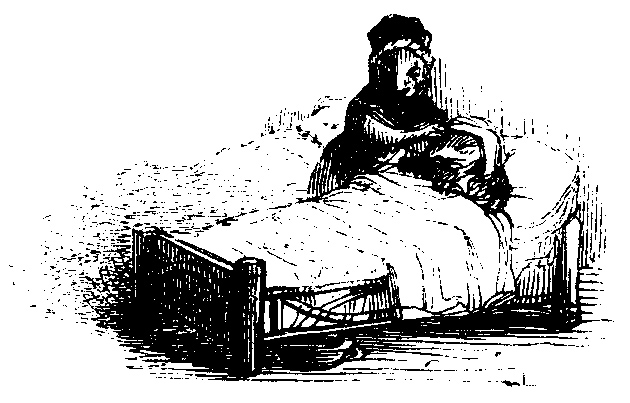In response to:
Capitalism Beyond the Crisis from the March 26, 2009 issue
To the Editors:
In his article “Capitalism Beyond the Crisis” [NYR, March 26] Amartya Sen rightly stresses the need to improve public understanding of how a national health service works. I live about twenty-four miles south of London in a small town with a population of around five thousand. We have a National Health Service medical center staffed with five doctors and the necessary support staff. Each registered patient can ask to see a doctor of his or her choice and the center is run on a predetermined appointments system.
Where necessary, doctors will issue prescriptions for drugs that can be purchased at a local drugstore for a fixed fee, at present £7.20 or around $12, although this charge is not levied on senior citizens. In addition, patients who are not satisfied with the treatment they are getting have the right to transfer to another medical center or surgery. NHS doctors exercise complete medical control over their patients and deal with referrals to consultants for specialist advice and operations.
Apart from the prescription charge, the service is free to all patients. The UK National Health Service deals with the majority of UK citizens but everyone has the right to opt out of the system and seek private medical advice and treatment for which, of course, they will pay.
John Dean
Westerham, Kent, England
To the Editors:
Amartya Sen’s thought-provoking article states clearly that the market cannot supply all the major needs of a free society in very important services such as health care, education, and welfare. However, he says that the Canadian universal public system is not an appropriate model for the United States to copy because it does not leave room for a parallel private system. The Canadian system treats health care as a right to which every resident is entitled regardless of ability to pay, while the United States regards it as a commodity to be bought and sold in the market. The two systems are incompatible.
Professor Sen believes that the French national health care service allows a larger role for the private sector than does the Canadian system. Total health expenditure is about 9.7 percent of GDP in both countries, but private-sector expenditure is actually larger in Canada (30 percent of the total) than in France (24 percent of the total). In both countries the large majority of physicians work in private offices, and patients have virtually complete freedom in choosing a family doctor, subject to availability. France has both publicly and privately run hospitals, while Canada does not allow the latter. Yet this is actually a small difference, since French private hospitals specialize in limited activities such as obstetrics or cataract removal, and are subject to the same regulations and reimbursement rates as public hospitals.
In both countries a physician may choose to practice privately, but on different terms. French doctors who do so are mostly paid at rates negotiated by the government. Canadian doctors who opt out of the public system may bill their patients as much as they wish; thus, medical incomes may be considerably higher in private practice. Canadians may buy insurance for supplements to the public system, such as a private room in a hospital, or to pay for services such as cosmetic surgery that are not covered by the public system, but they cannot buy insurance to cover general medical services that are provided by the public system.
If Canada allowed greater entry of the private sector into health care, especially private hospitals, this would entice doctors and nurses to move to the private sector in search of higher incomes. Since the ratio of physicians to population is at least one-third lower in Canada and the United States than in France,1 the effect of a shift of personnel to the private sector would be potentially more serious in the Canadian public system.
Contrary to Professor Sen’s belief, there are private clinics providing MRIs or CT scans in the largest Canadian provinces (health care is administered by the provincial governments), including Ontario, Quebec, British Columbia, and Alberta. However, numerous studies in the United States, Canada, and elsewhere have demonstrated that private for-profit health care costs more and produces poorer outcomes, including a higher mortality rate, than does not-for-profit health care.2 Private health care is therefore inefficient for society as a whole.
For example, a recent report by the Canadian Centre for Policy Alternatives3 revealed that despite large increases in the number of MRI and CT units in recent years, they had not appreciably reduced the waiting time for patients in the public system because they were used mainly for patients in private-pay clinics. Moreover, a large majority of the scans were performed without significant medical justification, especially in the private clinics, where many scans were done for reasons such as pre- employment health examinations for corporate executives.
Advertisement
We believe that these considerations are as relevant to health care needs in the United States as in Canada.
Harold Kalant, M.D., Ph.D.
Professor Emeritus of Pharmacology University of Toronto
Toronto, Ontario, Canada
Norman Kalant, M.D., Ph.D.
Professor of Medicine (retired) McGill University
Montreal, Quebec, Canada
Amartya Sen replies:
I warmly welcome John Dean’s letter. In arguing for a “better understanding of the options that exist” for universal health coverage in America, I focused particularly on the need to reverse the unjustified neglect in US public discussion of the health care systems in Western Europe. That neglect leads to the continuation of “hugely distorted perceptions” including the common misunderstanding that “no one has a choice of doctors in a European national health service.” Dean’s letter will help to get the picture straight.
I also welcome the letter of Harold and Norman Kalant as a part of that public discussion. They are mistaken in thinking that I was dismissing the merits of the Canadian system, but I did argue that “in US discussions of health reform, there has been an overconcentration on the Canadian system.” I did not, in fact, make any comparison between France and Canada (as they seem to think), but I did point to restrictions in the Canadian system that make it hard to have private health care in very important respects. This mainly happens through the ban on private insurance for some significant medical purposes. As Allan Detsky and David Naylor discussed not long ago in The New England Journal of Medicine, the Canadian health care system is “unique in the world in that it bans coverage of…[physician and hospital] core services for private insurance companies, allowing sup plemental insurance only for perquisites such as private hospital rooms.”4
Despite these prohibitory features, which contrast with more permissive European arrangements, Canada has high overall private health expenditure (as the Kalants rightly note). But as Robert Steinbrook explained in another article in The New England Journal, the fact that Canada has a higher proportion of private expenses in total health care than “in many European countries…reflects the fact that private payments are common [in Canada] for other expenditures, including drugs, dental services, optometry, and home care.”5
The contrast here is not about “treating health care as a right.” Western Europe does this too. Single-payer coverage of health care for all is common to both Canada and Europe. The contrast is about the exclusion of private insurance for some core medical services that Canada imposes, which some would see as a violation of personal liberty in an important area of human life (the prohibition is particularly glaring since no such ban is imposed on rich people’s purchase of yachts and other luxury goods). There is also the pragmatic question of political acceptability in America of such a prohibitory system. The continued “overconcentration” on the Canadian system, neglecting the European alternatives, is not helping to advance the critically important cause of universal health coverage for everyone in America.
This Issue
July 16, 2009
Advice to the Prince
-
1
OECD data, 2008.
↩ -
2
See Steffie Woolhandler and David U. Himmelstein, “Costs of Care and Administration at For-Profit and Other Hospitals in the United States,” The New England Journal of Medicine, Vol. 336 (March 13, 1997); and P.J. Devereaux et al., “Payments for Care at Private For-Profit and Private Not-For-Profit Hospitals,” Canadian Medical Association Journal, Vol. 170 (June 8, 2004).
↩ -
3
Alan Cassels, Jaclyn van Wiltenburg, and Wendy Armstrong, What’s in a Scan?, CCPA National Office, April 2, 2009.
↩ -
4
Allan S. Detsky and C. David Naylor, “Canada’s Health Care System—Reform Delayed,” The New England Journal of Medicine, Vol. 349 (August 21, 2003).
↩ -
5
Robert Steinbrook, “Private Health Care in Canada,” TheNew England Journal of Medicine, Vol. 354 (April 20, 2006).
↩




